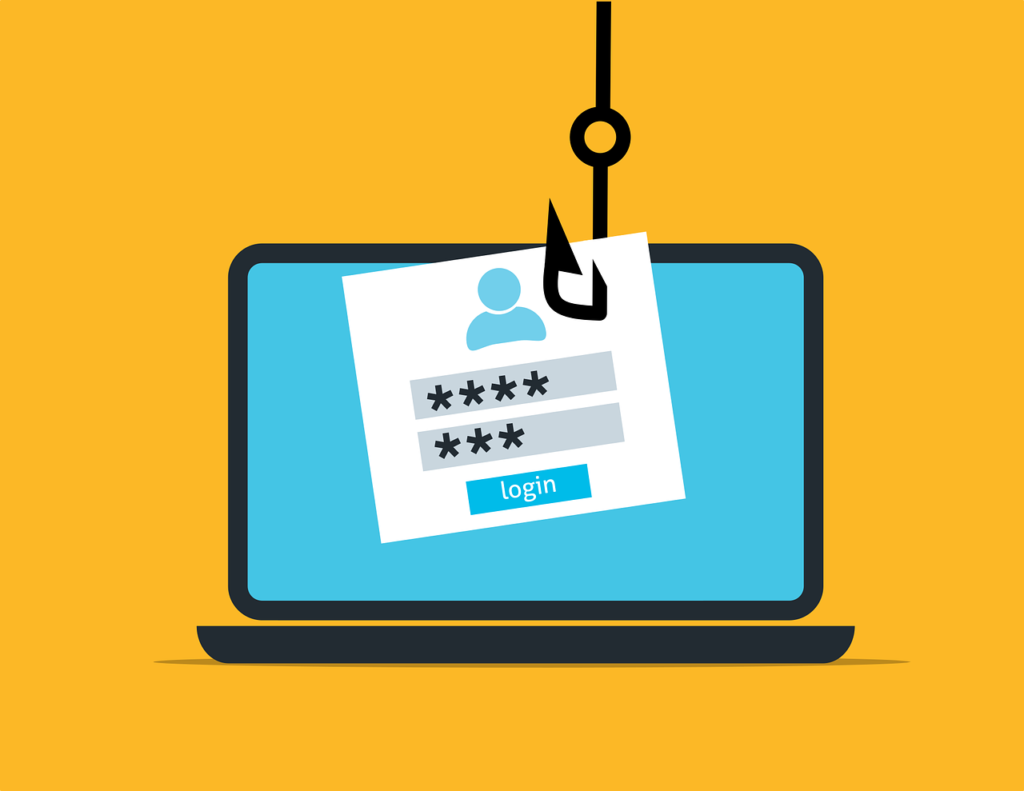Types of Phishing Attacks Examples
In today’s interconnected world, cyber threats are increasingly prevalent, with phishing attacks being one of the most common and deceptive techniques used by malicious actors. Phishing attacks continue to evolve, becoming more sophisticated and difficult to detect. In this article, we will explore the world of phishing attacks, phishing attacks examples, understand their various forms, and provide you with practical tips to protect yourself against them.
What is Phishing?
Phishing, derived from the word “fishing,” is a malicious activity where cybercriminals attempt to trick individuals into divulging sensitive information such as logon details, personal data, or financial details.
These attacks are typically carried out through deceptive emails, messages, or websites that impersonate legitimate entities, making it challenging for victims to distinguish between real and fake communications.
Types of Phishing Attacks
- Deceptive phishing
- Spear phishing
- Clone phishing
- Whaling
- Pharming attacks
- Angler phishing
- Search engine phishing
- Pop-up phishing
- Image phishing
Deceptive Phishing
Deceptive phishing is the common phishing attacks, which involves sending deceitful emails that appear to come from reputable organizations such as banks, social media platforms, or online retailers.
The attacker typically lures the recipient into clicking a link or providing sensitive data by creating a sense of urgency or offering a tempting reward.
Spear Phishing
Spear phishing attacks are more targeted in nature. Here, the attacker customizes their messages to target specific individuals or organizations.
By leveraging personal data obtained from various sources, the attacker creates a sense of familiarity and trust to deceive the recipient into taking a desired action, such as clicking a malicious link or downloading malware.
Clone Phishing
Clone phishing involves creating a replica of a legitimate email or website.
The attacker duplicates a previously sent email, modifies it to include a malicious attachment or link, and then sends it from a spoofed or similar-looking email address.
The recipient, perceiving it as a legitimate message, is more likely to trust and interact with the malicious content.
Whaling Attacks
Whaling attacks, also known as CEO fraud, target high-ranking executives or individuals in positions of authority within organizations.
In these attacks, the attacker impersonates a senior executive and sends emails to subordinates, requesting urgent transfers of funds or sensitive information.
The perceived authority of the sender often compels the recipient to comply without questioning the request.
Pharming Attacks
Pharming attacks involve redirecting users to fraudulent websites without their knowledge or consent.
Attackers exploit vulnerabilities in the domain name system (DNS) or compromise routers to redirect users to malicious websites that appear legitimate.
Once users land on these fake websites, their personal data or sign-in information may be stolen.
Angler Phishing
Angler phishing is a type of attack that targets users on social media platforms, online forums, or other online communities.
Attackers create fake accounts, pretending to be trustworthy individuals, and use these personas to trick users into revealing sensitive data or clicking on malicious links.
Voice Phishing (Vishing)
Vishing attacks are carried out through voice communication, such as phone calls or voicemail messages.
Attackers use social engineering techniques to impersonate trusted individuals or organizations, tricking victims into revealing sensitive data or performing specific actions over the phone.
SMS Phishing (Smishing)
Smishing, also known as SMS phishing, is a form of phishing where attackers use SMS (Short Message Service) or text messages to deceive and manipulate individuals into disclosing sensitive data or performing certain actions.
Similar to email phishing, smishing messages often appear to come from trusted sources, such as banks, government agencies, or service providers.
Search Engine Phishing
Search engine phishing involves manipulating search engine results to display malicious websites at the top of the search listings.
Unsuspecting users may click on these links, believing them to be legitimate, and unknowingly land on phishing websites.
Pop-up Phishing
Pop-up phishing occurs when users encounter deceptive pop-up windows while browsing the web.
These pop-ups often claim that the user’s computer is infected with malware or that they have won a prize.
To resolve the supposed issue or claim the prize, users are prompted to provide personal data or download malicious files.
Image Phishing
Image phishing is a technique where attackers embed malicious links or content within an image file.
When the image is opened or previewed, the embedded content can lead users to phishing websites or initiate malware downloads.
How Phishing Attacks Work
Phishing attacks typically follow a similar pattern. Let’s take a closer look at the general steps involved:
1. Planning and Preparation:
The attacker or hacker selects the target and gathers information about the individual or organization they wish to deceive.
This information helps tailor the attack for better chances of success.
2. Spoofing or Impersonation:
The attacker creates a fraudulent email, message, or website that appears to be from a trusted source.
They often spoof email addresses or create similar-looking domains to deceive recipients.
3. Delivery:
The attacker sends the phishing email or message to the target, making it appear urgent, legitimate, or enticing.
They may use psychological tactics to increase the likelihood of the victim falling for the scam.
4. Action by the Recipient:
If the recipient falls for the deception, they may click on a malicious link, download an infected file, or provide personal information by replying to the email or submitting it on a fraudulent website.
5. Exploitation:
Once the victim takes the desired action, the attacker acquires unauthorized access to their sensitive data, sign-in information or financial particulars.
This data breach is subsequently utilized for malicious intentions, such as identity theft or financial fraud.
By familiarizing themselves with the techniques utilized by attackers and detecting the indicators of phishing attacks, individuals can enhance their self-defense against these malevolent activities.
Phishing Attacks Examples
Examples of Email Phishing
Example 1: Fake Email from a Financial Institution
Subject: Urgent Action Required – Verify Your Account
From: [email protected]
Message:
“`
Dear Customer,
We have recently detected suspicious activity on your account. To ensure the security of your funds, we request you to
verify your account details immediately. Failure to do so may result in temporary suspension or termination of your account.
Click the link below to proceed with the verification process:
[Verify Account Now]
Thank you for your cooperation.
Best regards,
Your Bank Customer Support
############################
In this example, the attacker impersonates a well-known financial institution and creates a sense of urgency by claiming suspicious activity on the recipient’s account. The email prompts the recipient to click a link to verify their account, which leads to a phishing website designed to collect their sign-in information.
Example 2: Suspicious Password Reset Request
Subject: Password Reset Request – Action Required
From: [email protected]
Message:
“`
Hi [Recipient’s Name],
We have received a request to reset your password. If you did not initiate this request, please disregard this email. However, if you wish to proceed with the password reset, click the link below:
[Reset Password]
Thank you for using our platform.
Regards,
Social Media Support Team
############################
This phishing email preys on the recipient’s curiosity or concern about their account security. By clicking the provided link, the victim is directed to a fake authentication page where their log-in information are captured by the attacker.
Example 3: Urgent Message from a Social Media Platform
Subject: Important Notice: Violation of Community Guidelines
From: [email protected]
Message:
“`
Dear User,
We regret to inform you that your account has been flagged for violating our community guidelines. Immediate action is required to avoid permanent suspension.
To appeal this decision, please click the link below and provide the necessary information:
[Appeal Violation]
Thank you for your cooperation in maintaining a safe community.
Regards,
Social Media Moderation Team
############################
This example exploits the fear of losing access to a social media account. The recipient may be inclined to click the link to appeal the violation, but doing so leads them to a phishing website where their personal data or login credentials are harvested.
Example 4: Phishing Email Targeting a Corporate Employee
Subject: Urgent: Payroll Document Updates
From: [email protected]
Message:
“`
Hello,
As part of our recent system upgrade, we require all employees to update their payroll details by the end of the day. Failure to do so may result in delayed salary payments.
To update your information, please click the link below:
[Update Payroll Details]
Thank you for your prompt attention to this matter.
Best regards,
Your Company Payroll Department
############################
In this case, the attacker targets employees within an organization. The email appears to be from the internal payroll department and urges the recipient to update their payroll details by clicking the provided link. The link, however, leads to a phishing website where the attacker can capture the employee’s sensitive information.
Phishing Websites
Example 1: Cloned Banking Website
Phishing websites designed to mimic legitimate banking websites are common.
These websites often have a similar layout, color scheme, and branding as the original site, making it difficult for users to distinguish between them.
The attacker may send an email or direct the victim to the phishing website through other means, prompting them to enter their log-in credentials and other sensitive data.
The attacker can then use these details for fraudulent purposes.
Example 2: Spoofed Sign-In Page
Another example of a phishing website is a spoofed login page.
The attacker may create a fake authentication page that imitates popular online services, such as email providers or e-commerce platforms.
Unsuspecting users may enter their log-in information, assuming they are accessing their accounts, but instead, their information is captured by the attacker.
These spoofed login pages can be very convincing, often indistinguishable from the genuine ones.
Example 3: Malicious Website Promoting Fake Products
In some cases, phishing websites are used to promote fake products or services.
The attacker creates a website that appears legitimate, offering attractive deals or exclusive products.
Users may be enticed to make a purchase, but providing their payment information on these websites can lead to financial loss or identity theft.
These malicious websites may disappear once the attacker has collected enough data or funds, leaving victims with no recourse.
Recognizing Phishing Schemes
Red Flags in Phishing Emails
While phishing emails can be convincing, there are often indicators that can help identify them:
1. Email address
Check the sender’s email address. Legitimate organizations typically use domain-specific email addresses. Be cautious if the email is sent from a free email service or has a suspicious domain.
2. Grammar and spelling
Pay attention to grammatical errors or spelling mistakes in the email. Legitimate organizations usually have a high level of professionalism in their communication.
3. Urgency or fear tactics:
Phishing emails often create a sense of urgency or use fear tactics to prompt immediate action. Be skeptical of emails that demand immediate responses or threaten negative consequences.
3. Generic greetings
Pishing emails often use generic greetings like “Dear Customer” instead of addressing you by your name. Legitimate organizations usually personalize their communication.
4. Suspicious attachments or links
Exercise caution when opening email attachments or clicking on links. Hover over links to view the destination URL and ensure they match the website you expect to visit.
5. Request for confidential data
Legitimate organizations rarely ask you to provide personal data via email. Be wary of emails that request sensitive data such as passwords, Social Security numbers, or financial details.
Indicators of Phishing Websites
When visiting websites, watch out for the following signs that indicate a phishing attempt:
1. URL discrepancies
Carefully examine the website’s URL. Attackers may use slight misspellings or variations in domain names to trick users. For example, “paypa1.com” instead of “paypal.com.”
2. Missing security indicators
Phishing websites often lack secure connections. Look for “https” at the beginning of the URL, indicating a secure website, and a padlock icon in the browser’s address bar.
3, Poor website design
Phishing websites may have poor or inconsistent design elements. Look for visual anomalies, such as distorted images, misaligned elements, or unprofessional layouts.
4. Suspicious pop-ups or warnings
Be cautious if you encounter frequent pop-ups, alerts, or warnings that urge you to take immediate action. These are often tactics used by phishing websites to pressure users into providing sensitive information.
5. Unusual requests
Be skeptical if a website asks for unnecessary personal information or requests payment through unconventional methods. Legitimate websites usually have well-defined and secure processes for collecting information or conducting transactions.
Phishing Attacks Examples: Real-world Examples
Let’s examine a few real-world examples of notable phishing attacks:
• Google Docs Phishing: In 2017, a widespread phishing campaign targeted Google users through a deceptive email invitation to collaborate on a Google Doc.
Clicking the invitation link directed users to a fraudulent page where they were prompted to grant access to their Gmail accounts, enabling attackers to access their emails and contacts.
• PayPal Phishing Scam: Attackers often impersonate PayPal, a popular online payment service, in phishing attempts.
Victims receive emails alerting them of suspicious account activity or pending transactions, with links leading to fake sign-in pages.
Unsuspecting users enter their log-in credentials, which the attackers capture for unauthorized access.
• IRS Tax Scams: During tax season, scammers send emails posing as the Internal Revenue Service (IRS) and request confidential information or immediate payment for alleged tax liabilities.
These phishing emails exploit the fear of legal consequences to trick victims into revealing sensitive information or sending money to fraudulent accounts.
These real-world examples demonstrate the evolving tactics and sophistication of phishing attacks.
It’s crucial to stay vigilant and continuously adapt to the changing landscape of cyber threats.
How To Prevent Phishing Attacks
Security Awareness and Education
One of the most effective ways to protect against phishing attacks is to stay informed and educated about the latest threats and best practices:
Stay updated: Regularly educate yourself about new phishing techniques and emerging trends in cybersecurity. Stay informed through reputable sources, security blogs, or newsletters.
Security training: Organizations should offer comprehensive cyber security education and training to their employees, equipping them with knowledge about common phishing methods, indicators of potential threats, and appropriate security protocols.
Be skeptical: Develop a healthy skepticism when receiving emails, messages, or requests for personal information. Always verify the authenticity of the communication before taking any action.
Best Practices for Email and Web Security
In addition to awareness, implementing the following best practices can significantly enhance your security posture:
Enable multi-factor authentication: Use multi-factor authentication whenever possible, especially for sensitive accounts like email or online banking. This adds an extra layer of protection even if your credentials are compromised.
Be cautious of email attachments: Exercise caution when opening email attachments, especially if they come from unknown senders or seem suspicious. Scan attachments with an up-to-date antivirus software before opening them.
Verify requests for personal information: If you receive an email or message asking for sensitive, sign-in information, or financial details, independently verify the request. Contact the organization through their official website or customer support channels to confirm the legitimacy of the request.
Avoid clicking on suspicious links: Hover over links in emails or messages to see the actual destination URL before clicking. Avoid clicking on links from unknown or untrusted sources, as they can lead to phishing websites.
Regularly update software and use security tools: Keep your operating system, web browsers, and security software up to date. Install reputable antivirus and anti-malware software to detect and block phishing ploys.
Report phishing incidents: If you come across a phishing email or website, report it to the appropriate organization or authority. This helps in taking down phishing campaigns and protecting others from falling victim to the same scams.
By adopting these practices and maintaining a vigilant mindset, you can significantly reduce the risk of falling prey to phishing attacks.
Conclusion
Phishing attacks continue to be a prevalent and evolving threat in the digital landscape.
Attackers employ various tactics, such as deceptive emails, fake websites, and social engineering techniques, to trick individuals into revealing sensitive information or performing malicious actions.
Recognizing the signs of phishing attempts, understanding common attack methods, and implementing security best practices are crucial steps in protecting yourself and your organization against these scams.
Remember to remain cautious when interacting with emails, messages, or websites, especially if they request personal information or exhibit suspicious behavior.
Stay informed about the latest phishing techniques, educate yourself and your colleagues, and report any phishing attempts you encounter.
By combining security awareness with proactive measures, you can safeguard your online presence and mitigate the risks associated with phishing attacks.
That’s all about phishing attacks examples.
FAQ #1 : What is the relationship between social engineering and phishing scam?
Social engineering and phishing scams are closely linked, with phishing scams being a specific type of social engineering attack.
Social engineering involves manipulating individuals to disclose sensitive information or perform actions, while phishing scams use deceptive emails, messages, or websites to trick victims. Both techniques exploit human vulnerabilities to obtain confidential data.
Phishing scams are a subset of social engineering attacks, highlighting the connection between psychological manipulation and fraudulent online activities.
IT Security / Cyber Security Experts.
Technology Enthusiasm.
Love to read, test and write about IT, Cyber Security and Technology.
The Geek coming from the things I love and how I look.


